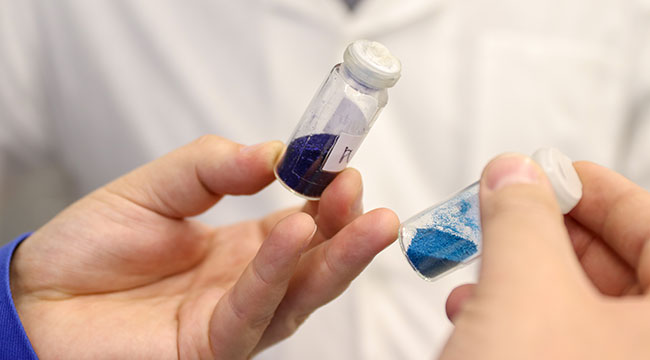Theory, Methods and Electronic Resources for Modeling and Predicting Structure and Properties of Materials

Research areas: Theoretical materials science, Software and databases for modeling and predicting structure and properties of materials, Prediction and synthesis of new polyfunctional materials, Artificial intelligence in materials science
Key projects (2018-2021):
- RFBR-NSF project «Development of hybrid topological-quantum mechanical method for the discovery of new inorganic electrides» (since 2021)
- RFBR project «Information-analytical system for predicting structure and properties of coordination polymers and metal-organic frameworks» (2018-2020)
- RFBR project «Development of hybrid topology-quantum-mechanical approach to modeling and forecasting the structure of intermetallics» (2018-2020)
- RFBR project «Theory and methods of combined topological-quantum-chemical prediction of mechanical anisotropy and
- flexibility of microporous molecular framework materials» (2018-2020)
- RSF project «Hybrid topological-quantum-chemical methods for prediction of adsorption, catalytic, and sensor properties of microporous framework and low-dimensional materials» (2016-2020)
- RSF project «Methods of topological design of coordination polymers» (since 2018)
- RSF project «Theory, methods of modeling and directional search for a new multivalent ionic conductors by crystallochemical analysis methods and quantum-mechanical modelling».
Practical implementation at International Research Center for Theoretical Materials Science (english.sctms.ru)
International projects:
-
China:
Northwest Polytechnic University (NPU, Xi'an), Particle Cloud (Xi'an)
and MSEA (Guan). Development of methods for predicting the structure
and properties of crystalline materials for additive technologies (3D
printing). Development of appropriate software and databases.
Synthesis and testing of materials in accordance with forecasts. A
joint Chinese-Russian innovation center has been established. Joint
research has been conducted since 2016.
Three international schools on topological methods in materials science were organized in China (Guan, 2017; Shanghai, 2018; Xi’an, 2019).
Joint RFBR-NSF project «Development of hybrid topological-quantum mechanical method for the discovery of new inorganic electrides».
Prof. Vladislav A. Blatov is an adjunct professor in NPU. - Italy: University of Milan. Prediction of new coordination polymers and metal-organic frameworks. Synthesis and testing of materials in accordance with predictions. Joint research has been conducted since 2003. In cooperation with the University of Milan, the Megagrant of the Government of the Russian Federation (2013-2017) was implemented.
- United Kingdom: University of Sussex. Prediction of new molecular magnets. Synthesis and testing of materials in accordance with forecasts. Applications are being submitted for joint projects of the RFBR and the Royal Society of London. Joint research has been conducted since 2011.
- United Kingdom: University of Nottingham. Development of software and databases for the design of metal-organic frameworks. The work is carried out within the framework of a joint grant from the Russian Foundation for Basic Research and the Royal Society of London. Joint research has been fulfilled in 2018-2020.
- United Kingdom: University of Manchester. Development of software for modeling crystal growth. The results are presented at the website crystalgrower.org.
- Germany: Freiberg Mining Academy. Development of methods for theoretical prediction of ionic conductivity in solids. Search for substances to obtain new solid electrolytes and cathode materials. Applications are being submitted for joint projects of the RFBR and the German Scientific Society. Joint research has been conducted since 2011.
Key scientists:
- Prof. Vladislav A. Blatov
- Prof. Alexander F. Krutov
- Dr. Alexander P. Shevchenko
- Dr. Eugeny V. Alexandrov
- Dr. Artem A. Kabanov